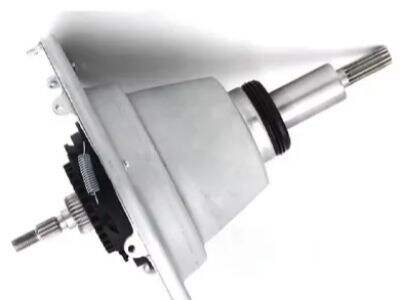When you put your dirty clothes into the washing machine and turn it on, you probably don't think about all of the different parts in the machine that help it run. The washing machine has a very important component called the clutch. Just like you have a helper who gets the work done, the clutch is that helper who ensures that the washing machine is able to shift from one cycle to the other, which is the stages of washing your clothes. These cycles consist of washing, rinsing, and spinning. Each one has its own individual job, and the clutch mechanic allows the machine to know when to switch between jobs.
How to Diagnose a Failed Clutch
Sometimes, your washing machine may not work as well as it should. If you hear strange noises emanating from it or if it’s not spinning the clothes out like it used to, there could be an issue with the clutch. Here is a step-by-step breakdown of how to determine whether your Automatic Washing Machine Clutchis due for repair:
Safety First: Do not perform any of these steps before the washing machine is unplugged. This is extremely critical for your safety.
Remove the Back: Gently remove the back panel of the washing machine. This will allow you access to see the clutch which is normally situated from inside the machine.
Inspect for Damage: After removing the back panel. inspect for any signs of damage. You may notice segments that are cracked or worn-out. For some broken or detached pieces, this may indicate that the clutch needs to be repaired.
Test the Clutch: Manually spin the clutch. If it glides in and out easily and smoothly, that’s a good sign. But if it feels frozen or it doesn’t move well, there may be an issue.
When to Fix: When you find something wrong with your washing machine during your inspection, it's time for as-long-as-necessary repair or replacement clutch in your washing machine.
Clutch Maintenance Tools Required
Repairing a Broken Washing Machine Clutch Here’s a roundup of the tools you’ll need to do the job:
Screwdriver: You’ll need this for removing screws when working on the machine.
Adjustable Wrench: This tool is primarily used to loosen or tighten parts.
Pliers: Good for gripping and pulling things.
Replacement Clutch Kit — You can buy a new clutch kit on the Internet or at a local hardware store It generally comes with all the components required for installing a new clutch.
Washing Machine Clutch Repair: Signs It’s Time to Repair It
Keep an eye out for symptoms that your washing machine clutch needs repair — this can be important! Here are some common ones to be on the lookout for:
Loud Noises: Loud noises while the machine is spinning may indicate a problem.
Wet Clothes: Dry and Clean laundry dry andldry and dirtyats when sometimesparts of clothes, suchinstead of Epson clothes, wet clothes come out of the washing machine. If it does, this may indicate that the clutch is failing.
No Spin: If the washer won’t spin at all, that’s usually a strong indicator that the High quality Washing Machine Clutch is malfunctioning.
Visible Damage: If there are any visible signs of damage on the assembly like cracks or broken components then the assembly needs to be repaired or replaced.
If you experience any of these symptoms, it’s time to either replace or repair the clutch. This will ensure that your washing machine works as intended and does so efficiently.
My advice for extending the life of your washing machine clutch
After replacing or repairing your washing machine clutch, follow these tips to prolong the life of your washing machine. So here are a few helpful tips.
Read the Instructions: Take the time to read the care and maintenance instructions offered by the manufacturer. This may guide how you should care for your washing machine.
Tide Detergent: Use the correct amount of detergent when washing your clothes. Excessive (too much) usage causes problem. Kawasaki said, also avoid overcrowding the washing machine with too many garments, which can put a load on the washing machine.
Time To Clean: You should regularly clean the washing machine. This allows dirt and debris to escape, preventing it from building up inside and causing problems down the track.
Handle with Care: Do not slam the washing machine door shut, which can damage the clutch and other internal parts of the machine.
Detection will add to your efforts and ensure that it continues to function in the long run if you follow these tips and maintain your washing machine. This will help your clothes remain clean and smell new. Keep in mind, regular maintenance will keep your washer running in top-condition!
The washing machine clutch is, after all, a crucial component of your laundry process, right? You should figure out exactly how it works, how to see if it has a problem, how to use the right tools to fix it, how you can see if it is damaged, and also how you should provide the machine with care to keep it for years. Use these tips on your washing machine and it will serve you reliably for years to come!
Table of Contents
- How to Diagnose a Failed Clutch
- Clutch Maintenance Tools Required
- Pliers: Good for gripping and pulling things.
- My advice for extending the life of your washing machine clutch
- Handle with Care: Do not slam the washing machine door shut, which can damage the clutch and other internal parts of the machine.

 EN
EN
 AR
AR NL
NL FI
FI FR
FR DE
DE EL
EL HI
HI IT
IT JA
JA KO
KO PL
PL PT
PT RU
RU ES
ES SV
SV ID
ID SR
SR UK
UK VI
VI SQ
SQ TH
TH TR
TR FA
FA AF
AF GA
GA CY
CY BN
BN MY
MY
